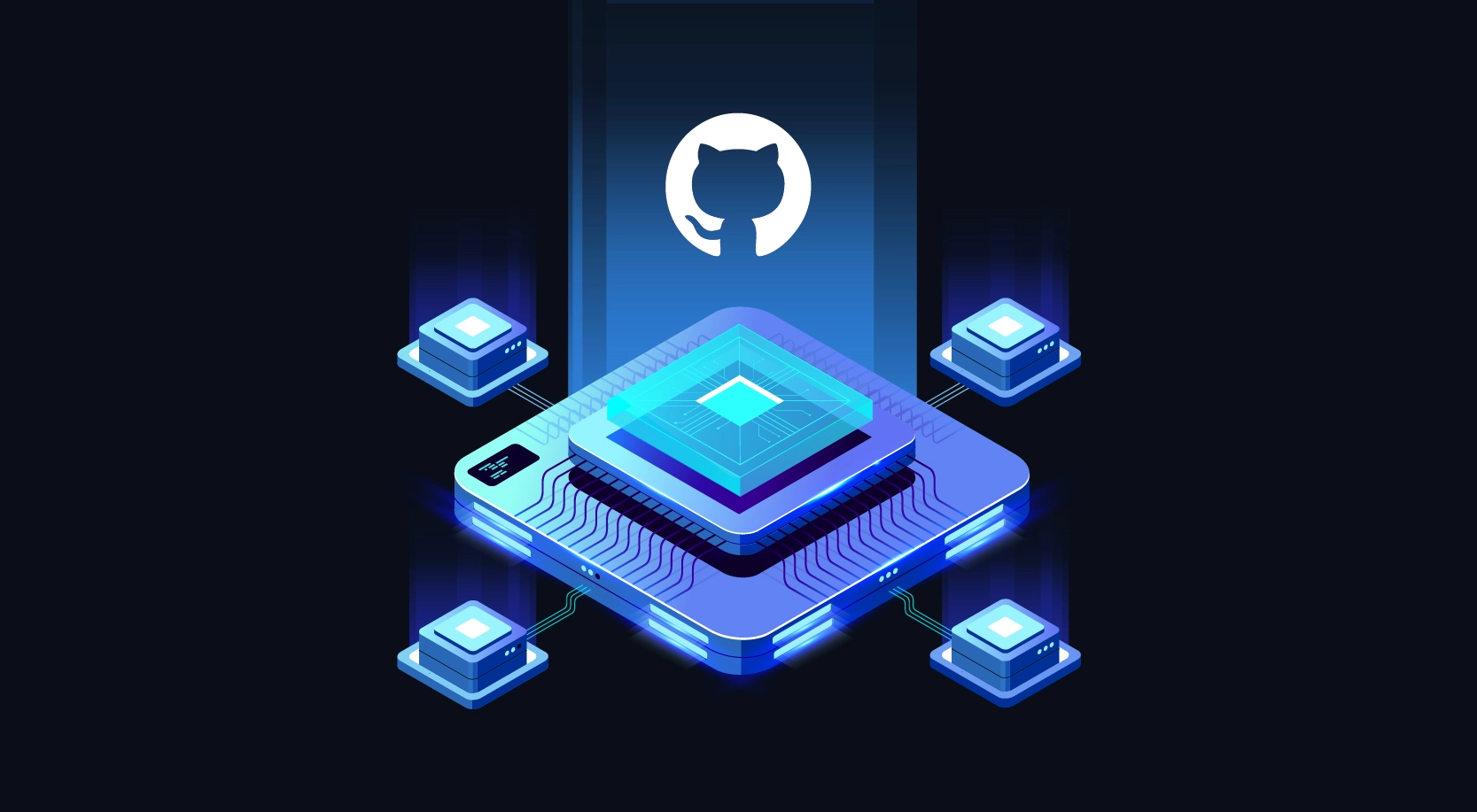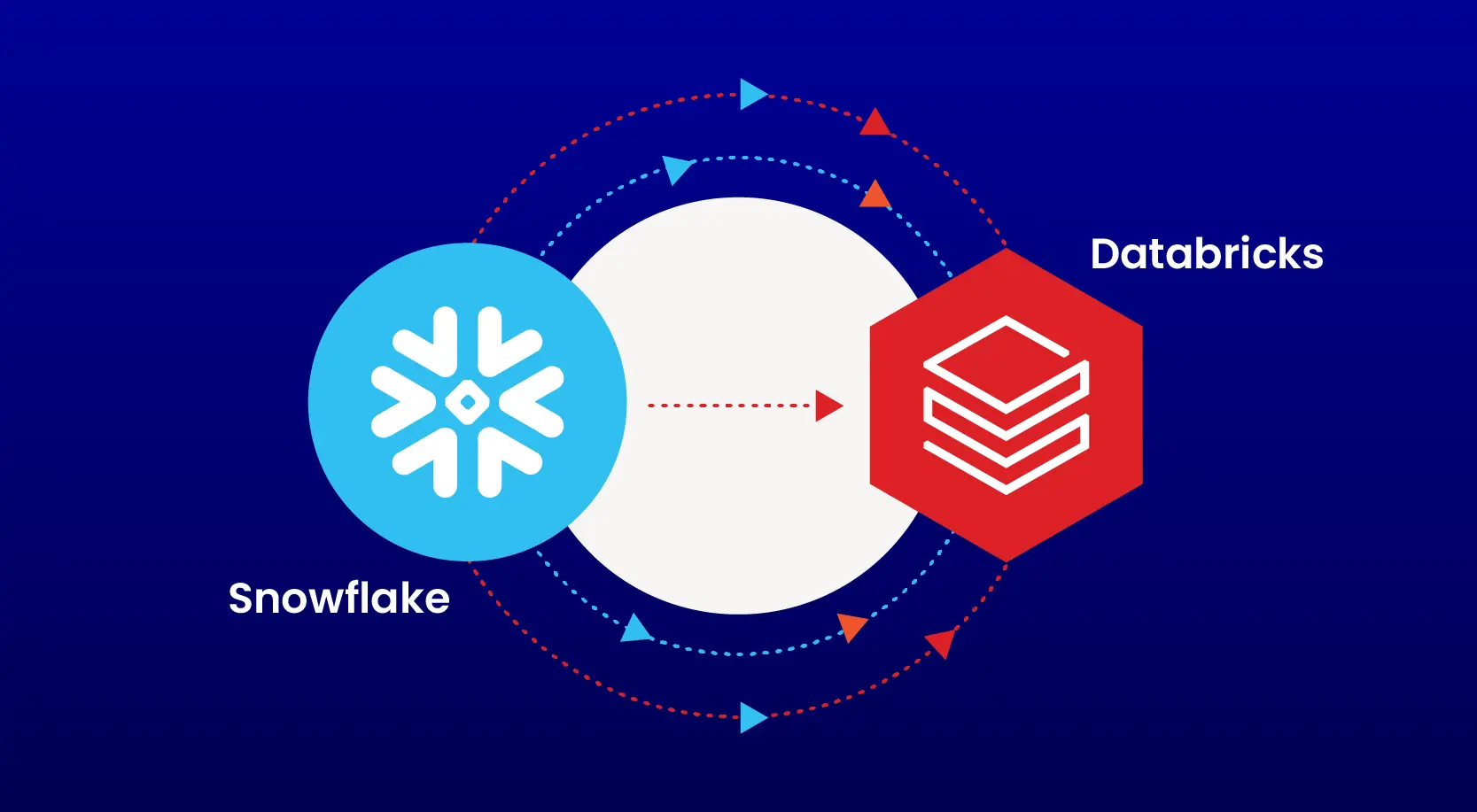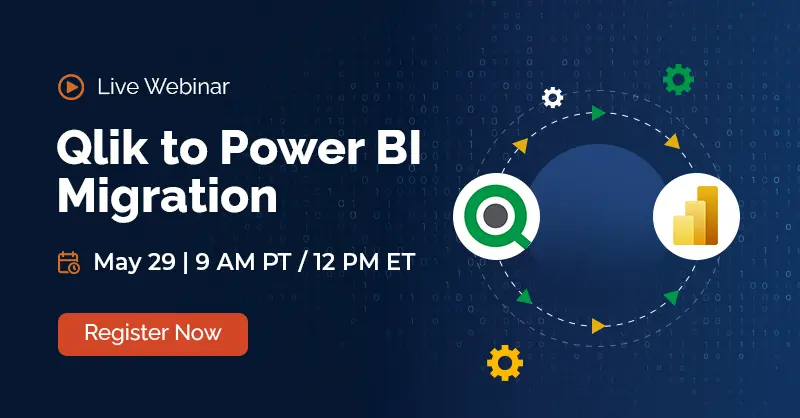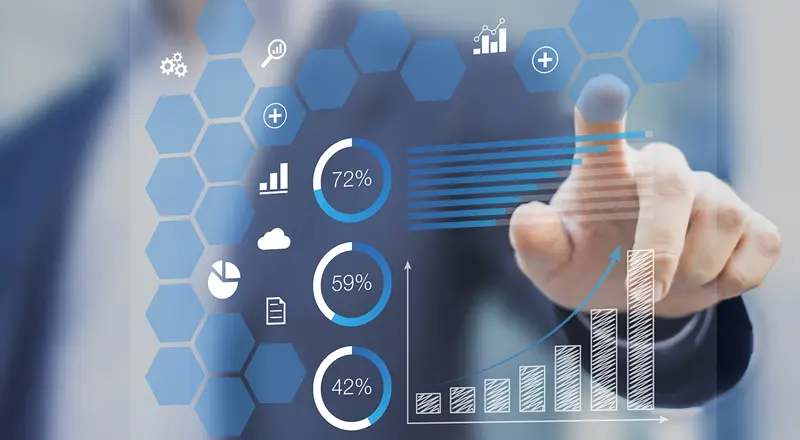
If you are a frequent business traveler like me, it is not uncommon to find yourself in an unfamiliar rental car and groping for that particular switch you want to turn on or off! That very bank of complex contraptions on the dashboard that looked jazzy as I stepped in, quickly became a nightmare to operate for an untrained eye while the car was in motion.
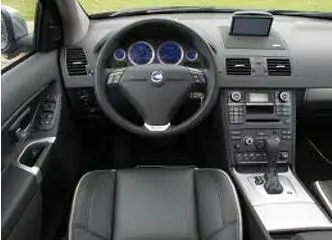
A transition from an ‘Engineer’s (read manufacturer’s) view’ to a consumer’s view!
Are we doing the same mistake when we create these wonderful PowerPoint slides and dashboard reports for our executives and wonder why it just whizzed past them with zero impact!
Time to think like a consumer!
Thinking like a Consumer
Thinking like a consumer means a small paradigm shift from how traditional BI projects are undertaken. In a traditional approach, the data drives the destiny of the report. The discussion would be centered on:
• What is the report about?
• Where are the data sources?
• When will the data be refreshed?
• What is the enterprise dashboard tool?
• How should the data be presented – graphs, pies, tables etc.?
This approach typically asks with – “What are the requirements?” and ends in an exasperated user blurting out “You just do not get it, do you?”
Thinking like a “Consumer” means, the consumer and the user becomes the center of the Universe. When we look the world through that lens, the questions that would come forth would be:
1) Who is the user of this information?
2) Towards what purpose is this information used for?
3) Why is this report important for the user? What business processes or decisions are impacted?
4) When does this information used in the decision-making time continuum?
5) Where does the user/ consumer look for such an information or insight currently?
6) How will the user consume this information?
Answers to these questions will illuminate the path in the following ways:
1) Help understand the criticality of the information and hence what IT rigor should it go through from a delivery standpoint?
2) What is the level in terms of the hierarchy of the user in the organization and hence at what level or granularity or aggregation should the report be presented? A foolproof method of delivering information for direct assimilation and not just to passed down for breaking it down (a typical response to a 100-page report delivered to the CFO being a simple forward to an analyst for hos review and study!)
3) How will this report be consumed by the intended end-user and hence what channel (s) would be appropriate for the delivery of this information?
4) The granularity of the information and the other characteristics of the data and the understanding of what insights are intended to be derived will inform what visual representation should be used.
5) It also informs what functions/ parts of the report are important and urgent and hence should be prioritized ahead of the rest – this drastically reduces the cycle-time for the reports to be developed ad delivered.
Difference between a traditional approach and a Consumer Apps approach
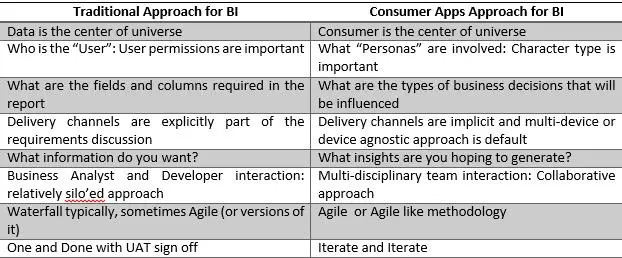
Why is it time for a different approach
Today’s consumer has two diametrically opposite experiences when it comes to software applications. One is at the office where the enterprise application makes one stare at the ‘spinning wheel’ interminably and another when the individual comes home and accesses the social media – where magically things happen at the speed of thought! One Chief Operating Officer summed up the situation very simply: It was a case where one of the reports that would normally take a week to manually put together has been enabled to be run automatically and run in 30 seconds at that. One would think that the executives would be thrilled by that – right? On the contrary, the Execs were pretty frustrated that the reports took this ‘long’ to run! In their mind – they were not benchmarking that report against one week it took to compile earlier but against the experience Facebook provides in user experience!
WinWire approaches the BI paradigm with a complete fresh pair of eyes. WinWire sees BI reports and Dashboards as a consumer application development pretty much how one would approach a mobile application build. The focus is on understanding who is the consumer, the type of persona involved and then delivering a sliver of functionality that is valuable to that persona type and iterate from there on. This is the essence of the unique ‘i2 – Innovate and Iterate Methodology‘. This approach is adopted across all user experience interfaces and BI also aptly seen as a User Experience application.
A high level view of the i2 methodology is depicted below:

WinWire uses this methodology widely across all BI engagements and to a very good effect.
Some of the key benefits for the customers are:
1) No surprises during User Acceptance.
2) High business appreciation of the value delivered and seamless upgrade to the report/ dashboard enhances the experience.
3) A Non-Silo’ed approach raises the adoption among all the power users and powerful users in equal measure. A single technology does not any longer dictate the user experience but an ensemble of technologies drive the persona’s need.
4) The IT – Business friction is very low as there is a ‘partnership’ evidenced as part of this journey and things not thrown across the wall.
Conclusion
Gartner cites just about 30% of the BI projects can be actually deemed a success by the business stakeholders. That is a very percentage by most standards. User Adoption is the biggest stumbling block among others for the success of the BI initiative. As technology advances enable richer and faster data processing capability, it should also be accompanied by a fresh look on how these applications are developed. A “consumer applications build” oriented approach could be just the shift that could trigger a closer user engagement and hence increase the adoption rates.
Going back to the rental car analogy – would I be happy if the rental car knows what car I normally drive and then give a quick 2-minute briefing on where the important controls are on the new one? May be I would appreciate that!
